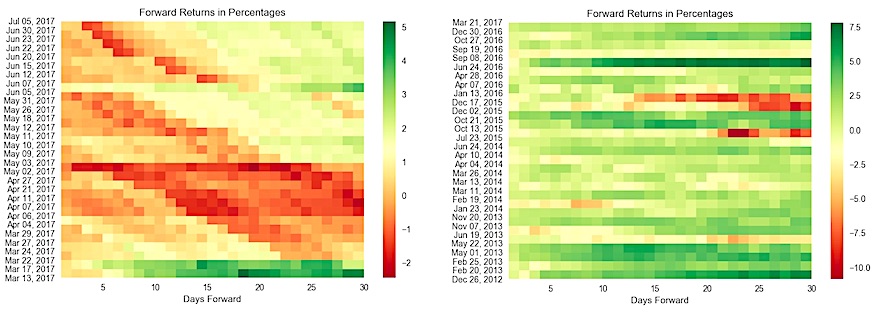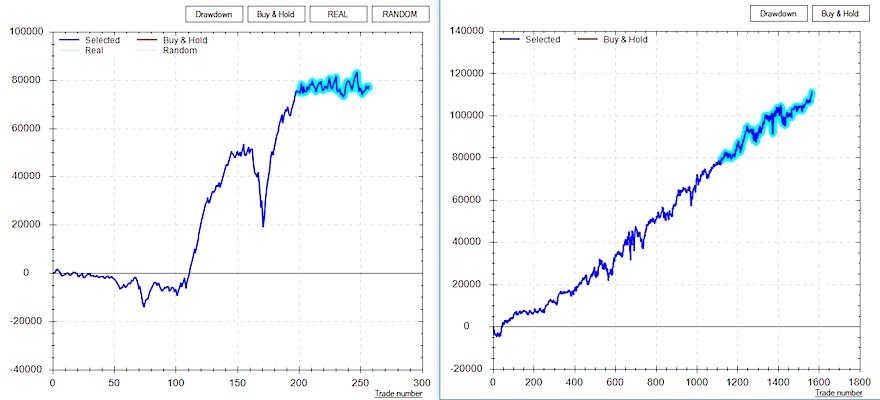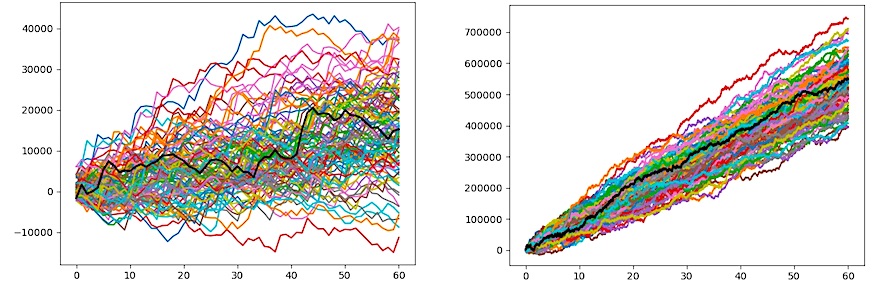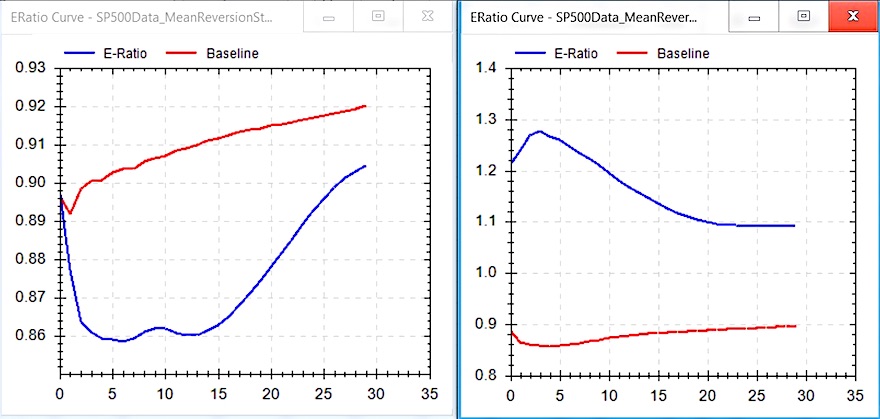Everyone talks about edge and every successful trader I know has one (most have a few trading edges or more). However, what does “edge” actually look like?
The quest for your first trading edge or simply adding one to your arsenal can be a much easier task if you understand what to look for. There are many different ways of quantifying (and visualizing) edge but I’ll limit it to 4 popular ways.
Four Popular Ways To Quantify Trading Edges
1. A heatmap of forward returns. The x-axis shows bars since the event of interest. It is very simple to see how one should (if at all) be positioned following an event while looking at a heatmap. You certainly don’t have any edge going long the chart on the right. The one on the left looks much more favorable for longs.
2. An equity curve. An equity curve shows the cumulative results of each time the event happened. This shows how an account would have grown over time abiding by a specific rule or set of rules. It is quite easy to distinguish between what would be considered an edge and what wouldn’t.
The next two ways of visualizing edges are a bit more complex, but can make all the difference.
3. Viewing the distribution of possible outcomes. This allows you to ask, if things do not go exactly as planned or exactly as how they did in the past is there still edge to be captured? You clearly see the difference in what an edge looks like by viewing these monte carlo results, for example.
also read: Turnaround Tuesday: Wall Street Cliche or Trading Edge?
4. The most advanced way I’ll mention is viewing the Edge Ratio or E-Ratio. This is a measure of how much favorable price movement you can expect compared to how much adverse price movement you can expect following your signal event. The values are of course normalized for volatility so you can compare e-ratios across markets and across time frames. I have a more comprehensive write up about e-ratio and its calculation here: buildalpha.com/e-ratioHowever, you can see below that the higher the blue line the more edge (quantified) there is.
All in all, we can agree that if you do not have an edge you will have a difficult time succeeding in this game. It is important to understand what edge looks like as many of us (myself included) are visual people. Understanding edge can help you determine when to trade, when to sit on your hands, how much to wager, and much more. Over at Build Alpha, we work with traders to help them find their edge.
Twitter: @DBurgh
No position in any of the mentioned securities at the time of publication. Any opinions expressed herein are solely those of the author, and do not in any way represent the views or opinions of any other person or entity.












